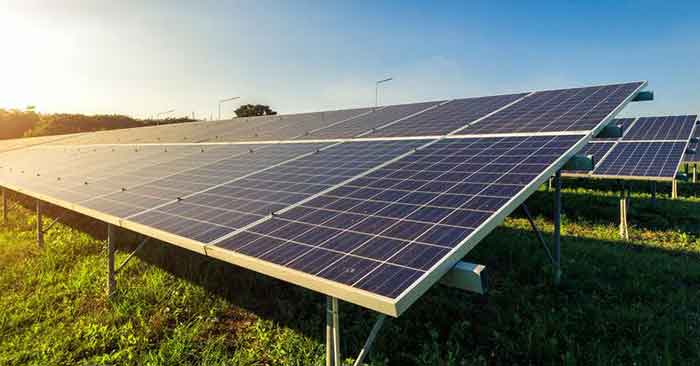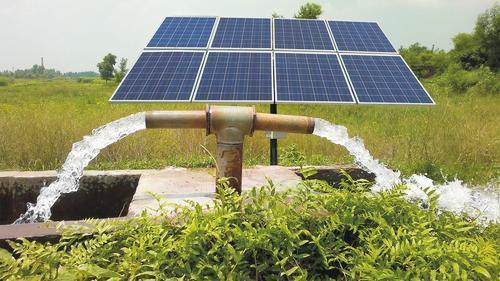
Two emails come in simultaneously into my email box. One almost chortling that California breaks energy record with 80% of state’s power generated using renewable methods. The Golden State generated 67% of its energy from renewables in one day. I stare at the text, truly amazed at California’s drive to get clean.
Meanwhile, the second email which is a Greenpeace analysis, sadly says, Indian cities lag far behind in installing rooftop solar. This is despite policies and net metering guidelines in several states, a subsidy of 30 percent offered by the Ministry of New and Renewable Energy (MNRE), the installation of solar rooftop systems has been dismal in leading metros in the country, especially in Chennai and Mumbai, says a Greenpeace India analysis, titled ‘Indian cities slacking on rooftop solar’.
A sad scenario indeed when pollution seems to be at an all time high in our country and the need to shift to clean renewables like solar is the desperate need of the hour. Delhi, says Green Peace, offers a Generation Based Subsidy as per the Solar Policy released last year, as well as net metered connections, but it has also failed to see a big uptake in the residential sector.
Delhi’s total solar potential is 2,500 MW with a residential potential of 1,250 MW. The official target in Delhi is to reach 1,000 MW worth solar installations by 2020 and 2,000 MW by 2025. But as of December 2016, only 35.9 MW have been installed out of which, only 3 MW were residential installations in March 2016. Mumbai, which has a potential of 1,720 MW has only 5 MW overall installed till now. The entire state of Tamil Nadu has less than 2 MW as against a rooftop solar target of 350 MW.
The reasons for the slow uptake seem to be lack of familiarity with the process and fear of bureaucratic red tape which is what most Indians fear. Getting caught in government fine print. Besides this, net metering provisions are present in most states, but effectiveness of implementation vary significantly.
“Despite the national incentive in the form of a 30% capital subsidy, and a range of state incentives and schemes, rooftop solar is yet to take off in the same manner as large-scale solar. However, this does not mean India should lower its ambitious targets, as some have suggested. Rather, the government must step up and play a more proactive role in encouraging rooftop installations. This can be via innovative financing schemes, aggregating demand and incentivizing city and state governments. The potential benefits in terms of reduced energy expenditure and cleaner air due to reduced demand on fossil fuels are too significant to be ignored. As the convenor and a founding member of the International Solar Alliance, and a country with abundant solar potential, India’s commitment to clean energy must continue to be robust,” says Pujarini Sen, Climate and Energy Campaigner, Greenpeace India.
If one looks at the reason why we need to clean uip our act across the country, here are a few reasons. Air pollution leads to 1.2 million deaths every year according to a Global Burden of Disease study. Decarbonising the power sector is essential tackle the menace of air pollution.
A poll conducted by Greenpeace suggests significant public interest in adopting rooftop solar. Close to 55 percent of the 812 survey respondents from our supporter base expressed interest in investing in and installing solar.
“There is still a widespread perception that installation of rooftop solar panels needs a large investment, and people are not always aware of the financial incentives available. If central and state governments are serious about boosting solar, they must do a better job of reaching out to resident welfare associations and community groups to encourage people to shed their inhibitions and embrace rooftop solar,” says Sen.
Let us look at the issues in different states:
NEW DELHI: Official Target: 1000 MW by 2020, 2000 MW by 2025 Rooftop Solar Potential: 2500 MW total, of which 1250 residential Rooftop Solar installed: 35.9 MW total (as of December 2016) , of which only 3 MW residential Incentives in place: Net Metering. GBI: Rs 2 per unit generated (expires 2019, with restrictions)
MUMBAI:
Official Target: 4,700 MW (all Maharashtra) by 2022, no Mumbai-specific target
Rooftop Solar Potential: 1720 MW (IIT Mumbai) Incentives in place: Net Metering, banking of excess generation credits, with unutilized credits being purchased at end of the year.
BENGALURU
Official Target: 400 MW (entire state) by 2018
Rooftop Solar Potential: Unknown, mapping currently underway by BESCOM and CSTEP Incentives in place: Net metering and Gross Metering; Tariff of Rs 6.03 after capital subsidy, 7.08 without subsidy.
HYDERABAD:
Official Target: No target specified in Andhra Pradesh rooftop solar policy Rooftop Solar Potential: Unknown Incentives in place: Net Metering and Gross Metering, with tariffs equal to average ‘cost to serve’ of the DISCOM12
CHENNAI:
Official Target: 350 MW target rooftop solar (for the entire state) specified in TN’s Energy Policy 2012 (MNRE specifies tentative 8.8GW for the state by 2022 for all solar PV, utility and rooftop). Rooftop Solar Potential: Unknown Incentives in place: 20,000 subsidy for domestic consumers under CM’s Solar Rooftop Capital Incentive Scheme, Net Metering
Clearly Bengaluru, Hyderabad and Chennai need to get their act together to at least check the potential of roof top solar. It is shameful to see that the so called developed world is going all out tho meet their energy needs from clean methods while we slack and do not even have the basic incentives in place.
Marianne Furtado de Nazareth is the former Assistant Editor, The Deccan Herald, adjunct faculty, St. Joseph’s PG College of Media Studies & a PhD scholar at the Madurai Kamaraj University















































